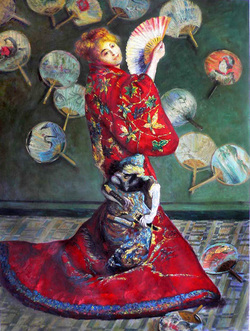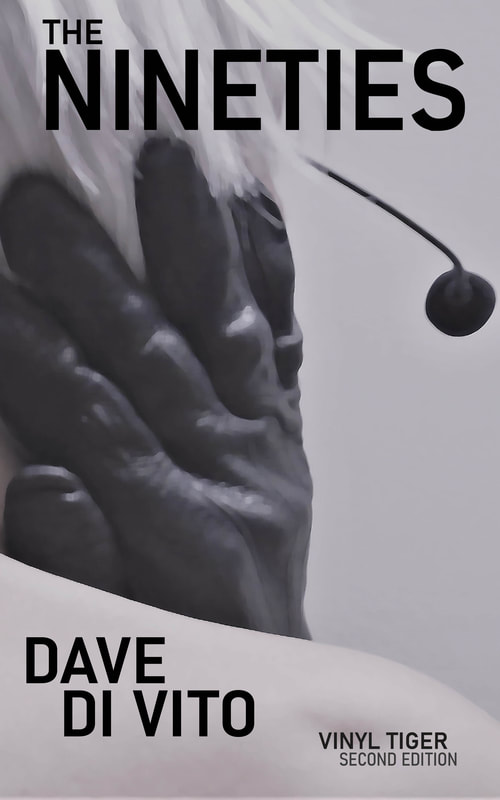|
I ONCE wrote a thesis on Japanese woodblock prints. It was called The Shift to Intimacy. It was a thesis that looked at how those kooky woodblock prints were the first form of mainstream and wide scale publication, but that were also the first form of public/private art that the public really took to. I remember doing a solid year of research on the topic, reading everything I could find, and scouring museum collections near and far to help me illustrate my point. Back then, I worked under the supervision of two really ace Japanese art experts who tutored me and helped me get a grasp of what Japanese art is all about. In doing so, I recall being struck by how the Boston Fine Arts museum was basically a treasure trove of Japanese art: the best collection of Japanese works outside of Japan (as a result of the mass sale of Japanese art to Westerners during the second world war). For a period of time I was obsessed with ukiyo-e - the floating world - and the old, traditional pleasure quarters of historical Japanese life. Once you get into that headspace, it's very difficult to get out of it. I lived in Kyoto for a couple of years. Loved the place. Just obsessed with it, even now. I dug Tokyo as a place to visit, but Kyoto for me at least, was always the more interesting and layered place (and a hop skip and jump to Osaka, Kobe and Nara). Kids, the Kansai is where it's at. Kyoto is seen as the traditional home of culture in Japan. It was the country's capital for a really long time, and largely escaped the WWII bombings that otherwise flattened the cities in Japan. As a result it's a living, breathing city that is teeming with thousands of years of its history: from wooden palaces to ugly, brass decorated glass buildings from the seventies. It's a living map of culture. One of the things you can do in Kyoto is visit the Nishi-ji Textile Centre. Kyoto, being home to the traditions and culture of the country, is also seen as the home of the kimono. At Nishi-ji you can try on amazing kimono, like the one I snapped my dear friend in in the above photo. But it's the real deal there: you have to put on like seven or eight layers of the fabric and it weighs a tonne.  Monet, La Japonaise Monet, La Japonaise Dressing up in kimono or as a samurai, or even going the full scale and dressing as a geisha are among the kitschy things you can do in Kyoto and other parts of Japan. People have a fascination with that kind of stuff, and you can argue that playing dress ups in that context and that environment, regardless of your race or heritage, is a way of supporting the local economy and educating visitors by strengthening their ties to a foreign culture. Walk a mile in another man's shoes and all that. But there's been a big commotion in Boston in recent days at the Fine Art Museum. Among the objects in their collection is Monet's La Japonaise, which was a portrait of his wife Camille wearing a blonde wig and a kimono, surrounded by those other ubiquitous trademark items: paper fans. Let's just call it a period piece. It was a time when the European obsession with all things East was the norm and one of many contributions that made Japan, despite its distance, an enigmatic place on the map which seemed to scream culture and sophistication. Times have changed, and even on this blog I've noted how cultural appropriation is a huge controversy these days. While dressing up in traditional costumes or paying homage to cultural looks was still the norm even in the nineties, these days we are much more careful about things. Partly because we've revised the way East met West and because a lot of the way that we look at our differences is shaped by Western colonialism. That traditionally had a flow on effect with the exoticising or objectification of Asians (and of indigenous Australians, Africans, South Americans, Islanders etc. etc.). So what does that have to do with anything you ask my dears? Well, the Fine Art Museum attempted to tap into the current private/public fascination with art. You know, the one that finds its portal via social networks. Where people add a hashtag and tag themselves as being at blah blah blah place. The Boston Fine Art Museum attempted to take advantage of this by promoting Monet's piece and offering visitors the chance to dress up in a kimono (from their collections) and snap a photo of themselves (damn selfies!) alongside the work to be shared online. But not everyone is pleased, and in fact, the huge social outrage about this has led to the Fine Art Museum changing its approach. In the face of protests and people fuming online about yet more colonialism and objectification of cultures, the Museum has suspended the offer of dressing up but has instead ramped up the educational platform and its approach to getting visitors to engage with the kimonos in its collections. Is it an incorrect, imperialist context? Are we blowing things out of proportion, or is putting a kimono on in this way equal to black face? More at the NYT on this one, but I'd be curious to know your thoughts on the matter...let me know via the comments section.
0 Comments
Your comment will be posted after it is approved.
Leave a Reply. |
Dave
|
|
|
Dave Di Vito is a writer, teacher and former curator.He's also the author of the Vinyl Tiger series and Replace The Sky.
For information about upcoming writing projects subscribe to the mailing list. Dave hates SPAM so he won't trouble you with any of his own. He promises. |





 RSS Feed
RSS Feed